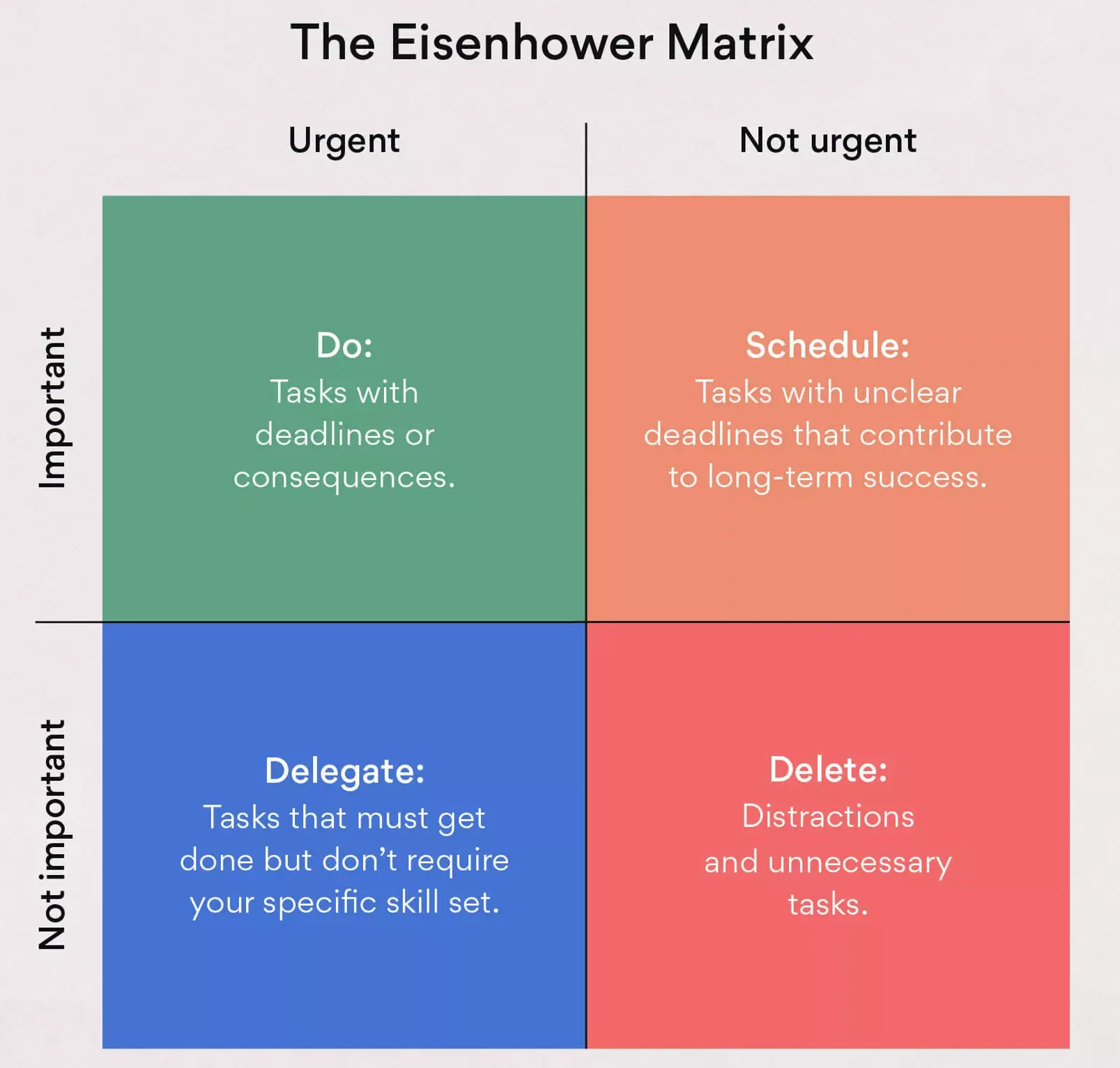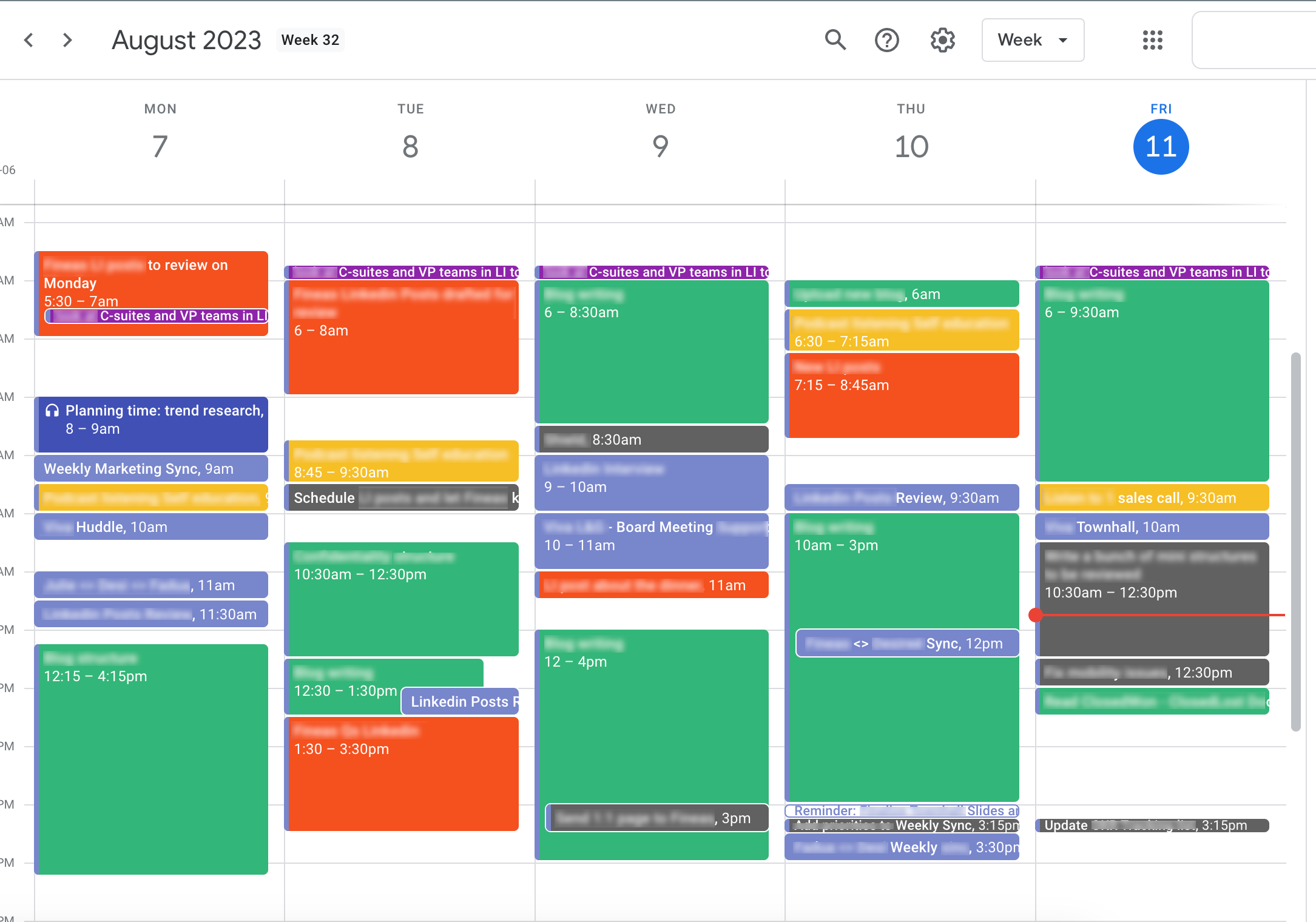
Mastering Time Management: Your Key to Balancing a 9-5 Job and a Growing Business
Time management is one of the biggest challenges when you're trying to build a business while working a full-time job. Balancing these two demanding roles can feel overwhelming, but with the right strategies, you can make it work. In this blog post, we'll explore practical time management techniques that can help you stay productive and avoid burnout. Let's dive into three essential categories: Prioritizing Tasks, Effective Scheduling, and Setting Boundaries.
Prioritizing Tasks: Focus on What Matters Most
When you’re juggling a 9-5 job and a business, every minute counts. That’s why it’s crucial to prioritize your tasks. Prioritizing means figuring out which tasks are the most important and tackling them first. Here are some simple steps to help you prioritize effectively:
1. The Eisenhower Matrix: This tool is great for sorting out your tasks. Divide them into four categories:
- Urgent and Important: Tasks you must do immediately, like meeting a project deadline.
- Important but Not Urgent: Tasks that are crucial but can be scheduled for later, such as planning your business strategy.
- Urgent but Not Important: Tasks that need attention now but aren’t crucial, like answering non-essential emails.
- Not Urgent and Not Important: Tasks that are distractions and can be eliminated or postponed.
By using this matrix, you can focus on tasks that will have the most significant impact on your business and job.

2. Identify Your Top Three Tasks: Every day, pick the three most important tasks that will move you closer to your goals. These should be tasks that, if completed, will make the biggest difference. By focusing on these tasks first, you ensure that your time is spent on what truly matters.
3. Learn to Delegate: You don’t have to do everything yourself. If you have tasks that can be handled by someone else, delegate them. This could mean asking a colleague to help with work tasks or hiring a virtual assistant for your business. Delegating frees up your time for high-priority tasks.
Effective Scheduling: Make Every Hour Count
Good scheduling is about making the most of your time. It’s not just about filling up your calendar, but about planning your day in a way that maximizes productivity and minimizes stress. Here’s how you can create an effective schedule:
1. Time Blocking: This technique involves dividing your day into blocks of time, with each block dedicated to a specific task or activity. For example, you might block out 9 AM to 11 AM for work-related tasks, 12 PM to 1 PM for a lunch break, and 7 PM to 9 PM for working on your business. By assigning specific tasks to each block, you can stay focused and avoid multitasking, which often leads to mistakes and burnout.
2. Routine Development: Establishing a daily routine can bring structure and predictability to your day. Start with a consistent morning routine that sets a positive tone, such as waking up early, exercising, or meditating. An evening routine can help you wind down and reflect on the day, preparing you for a productive tomorrow. Routines help you develop good habits and make time management easier.
3. Plan for Breaks: It’s essential to schedule short breaks throughout your day. Breaks help you recharge and maintain focus. You can try the Pomodoro Technique, where you work for 25 minutes and then take a 5-minute break. After four sessions, take a longer break of 15-30 minutes. This method can improve concentration and prevent burnout.

Setting Boundaries: Protect Your Time and Energy
One of the hardest parts of managing time is setting boundaries, especially when you have two demanding roles. But setting clear boundaries is crucial for protecting your time and energy. Here’s how you can establish effective boundaries:
1. Separate Work and Personal Life: It’s important to create a clear separation between your work, business, and personal life. If you’re working from home, designate a specific area for work and another for your business. When your workday ends, physically and mentally leave the workspace, even if it’s just closing the door to your office. This separation helps you switch gears and avoid burnout.
2. Digital Boundaries: Technology can blur the lines between work and personal life, making it hard to disconnect. Set specific times to check emails or respond to messages and stick to them. Turn off notifications during personal or business time to avoid distractions. You can also use apps like "Do Not Disturb" mode on your phone to ensure uninterrupted time for work, business tasks, or relaxation.
3. Communicate Your Boundaries: Be clear with your employer, colleagues, and family about your availability. Let them know when you’re working on your business and when you’re off-limits. For example, if you’re dedicating evenings to your business, let your family know that you need uninterrupted time during those hours. Setting these boundaries early on helps prevent conflicts and ensures that everyone respects your time.

Conclusion: Time Management Is Your Key to Success
Balancing a full-time job and a business is challenging, but with strong time management skills, you can make it work. By prioritizing your tasks, scheduling effectively, and setting boundaries, you can stay productive, avoid burnout, and keep moving toward your goals. Remember, it’s about working smarter, not harder. Start implementing these strategies today, and you’ll be on your way to achieving your dreams while maintaining your well-being.
Accelerate Your Success: Book a Call to Explore How My Services Can Advance Your Goals!

